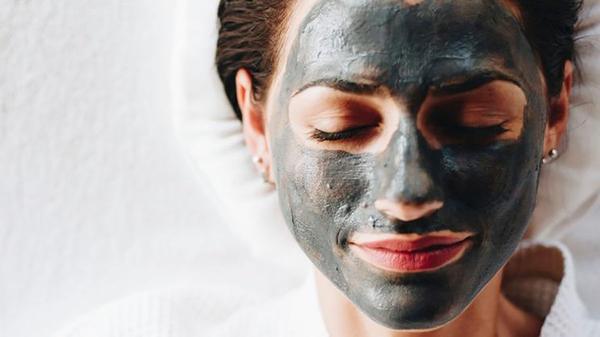29
08/2022
We have always associated mud with a way of caring for our skin, leaving a soft and toned effect on it. The truth is that it is a natural environment with many other benefits for our body that humans discovered millennia ago. “Mine-medicinal waters and muds have been used since the days of Ancient Egypt and the Roman Empire. Currently, they are used especially in spas, spas and beauty centers," says Nayra Merino, dermatologist at Dermamedicin Clínicas and member of the Healthy Skin Foundation of the Spanish Academy of Dermatology and Venereology (AEDV).
The expert indicates that the main properties of the mud are its exfoliating effect, which helps to eliminate cell debris and impurities; hydration and improvement of elasticity, thanks to its high content of minerals such as silicon, magnesium, zinc and copper; as well as its firming and draining effect that favors blood circulation. In addition, the mud is also a regulator of fat and antiseborrheic, that is, it reduces the increase in the secretion of the sebaceous glands of the skin.
Mud therapy is a topical treatment that consists of applying mud or clay in order to provide our skin with the aforementioned benefits and other medical problems such as varicose veins or cellulite. Likewise, this therapy can be enriched with a mixture of various plants and herbs, also possessing multiple properties, such as rosemary or sweet clover.
In spas or beauty centers they offer this treatment that, combined with massages, allows you to enjoy a relaxation session. Therefore, we are not only talking about taking care of the health of our skin, mud therapy also works on causes of stress that alter the body. "You must differentiate between mud and clay, which are two types of mud, but while the clay is obtained from the earth, the mud is taken from the bottom of the sea or from springs," clarifies Merino, who adds that the mud has more minerals and, therefore, more properties.

The dermatologist explains that “mud can be marine, which in addition to being rich in minerals, is also rich in microscopic algae; of rivers and swamps, rich in sulfur; or volcanic areas, rich in trace elements (minerals in small quantities present in our body such as iron, copper, solonium or iodine). Regarding clays, the dermatologist distinguishes several types: green, yellow, pink, black, red, green, gray and white, “green being the most frequently used for the skin”.
How to Use HouseParty on ChromeHaving fun with friends without leaving the house, the HouseParty is a perfect pla… https://t.co/yK3VJYPx7F
— Arya Stark Thu Jun 11 10:11:11 +0000 2020
Is mud therapy always recommended?
Mud therapy is beneficial for diseases such as psoriasis, "although it is contraindicated when there are pustules," says Merino. On the other hand, this topical treatment is also advisable for patients with seborrheic dermatitis "because of its sebum-regulating effect."
Mud, capable of cleansing the skin and eliminating impurities, is also a recommended remedy for treating acne, although, in the words of the dermatologist, always “after carrying out the appropriate pharmacological treatment. In this sense, Merino insists that, to treat these diseases, mud therapy is not enough on its own, but that it is always a remedy that helps "correct diagnosis, management and dermatological treatment."
Marine mud from the beach, yes or no?
Merino's answer is emphatic: “No, it must always be mud controlled and applied by a professional”. For this reason, to acquire the appropriate sludge, it is sold wet to preserve its properties. "The clays are distributed after a filtering and drying process, so in order to apply them, a mixture is made with mineral waters or essential oils," the expert details. After smearing the skin with the product, you have to wait a few minutes for it to dry and perform its function, then remove it with water.
As for whether clay or mud are also good for the face, the dermatologist answers yes: we should use the mud as a mask, very useful in cases of acne.

- 871
- Can I wear a nose mask with facial hair?
Related Articles
How to remove blackheads from the nose - Tips and tricks
04/02/2022Rating: 4.6 (20 votes)3 commentsBy Marta Vicente. Updated: September 10, 2021 Blackheads are very common in some areas of the face, such as the nose, since it is in these places where...
5 tourism innovations born in the pandemic that have come to stay
01/02/2022In the 20 months since the start of the COVID-19 pandemic, technological innovations have gone from futuristic to familiar. Nowadays it has become habitual in our day to day...
Get all the information you need for Miami Ultra Music Festival 2018 Get all the information you need for Miami Ultra Music Festival 2018
31/01/2022Are you ready for Ultra Miami next week? If so, it doesn't hurt to maximize your experience with this essential information.Ultra Music Festival is preparing to open its doors next...
46 Best World War II German Helmet in 2022 - Based on 793 Customer Reviews and 57 Hours of Testing
10/04/2023Yes, Mil-Tec German M35 Steel Helmet Reproduction GMII (M) is one of the most sought after WWII German Helmet, it doesn't meet everyone's needs and can be a bit expensive. That's why,...